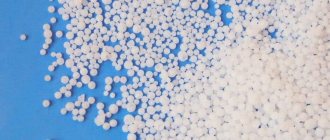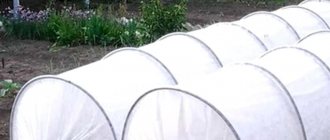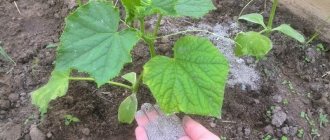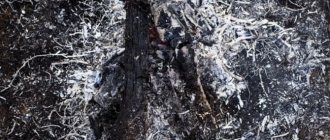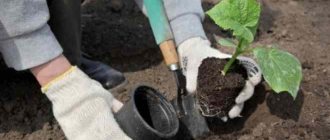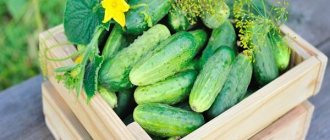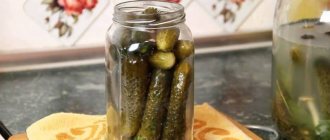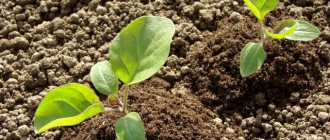The beds with cucumbers look pale, the leaves have turned yellow, and the fruits are bitter? The most likely reason for these signs is a lack of fertilizer. When growing cucumbers in your summer cottage, you must remember that the plant needs regular care. Fertilizing will help you get a bountiful harvest.
In this article we will look in detail at how to feed cucumbers and describe the timing of events. You will find recipes for organic fertilizers that will help you grow an environmentally friendly product, learn the timing and methods of fertilizing, and learn how to properly process plants.
What is the best way to feed cucumbers?
When growing cucumbers, the question often arises: which fertilizers should be used in a greenhouse and which ones in open ground? Experts answer this question in detail.
In the greenhouse
The feeding procedure in the greenhouse is carried out every two weeks 4-6 times a season. Fertilizing work in the greenhouse can be done at any time, regardless of weather conditions.
Important! When starting to feed cucumbers, it is important to remember that they cannot tolerate an excess of nutrients.
Terms for applying fertilizing:
- The first time is before planting seeds. Place compost and humus in the ground for planting.
- The second time - during the period of growing seedlings. Fertilize with ammonium nitrate (2 tablespoons of nitrate per 8 liters of water).
- The third time - a month after planting the seedlings in the ground. For this purpose, organic means are used: yeast, herbal infusion, ash. Chemicals are used in the form of a mixture: 2 tbsp. spoons of superphosphate, 1 tbsp. a spoon of ammonium nitrate, a glass of wood ash, a bucket of water. This will help increase the green mass and lay a larger number of ovaries.
During flowering and fruiting, fertilize every two weeks.
In the open ground
Cucumbers growing in open ground require more careful care. Fertilizers are applied 6-8 times per season. In the intervals between root dressings, foliar irrigation is carried out. The product is distributed evenly onto the leaves and stem.
Work begins after the second leaf appears. Immediately apply the following nitrogen fertilizers:
- Ammonia is diluted in water in the following proportion: 1 tbsp. spoon of alcohol, 8 liters of water. Water 0.5 liters of solution under the bush.
- After a week, use a solution of brilliant green. Add 10 drops of brilliant green to a bucket of water. Spray the stem and leaves from all sides. Fertilizing can be done every week until flowering begins.
- For the regrowth of green mass, yeast tincture is used. Yeast is diluted in warm water, left for a day and watered at the root. Proportions: 0.5 kg of yeast, 3 liters of water, 0.5 liters of jam. The resulting mixture is diluted in water (1:8).
Then they switch to phosphorus-potassium fertilizers. A mixture of superphosphate, urea, ash, tincture of mullein or chicken droppings is used.
Cucumber is a capricious but grateful plant
The cucumber is native to the tropics and subtropics of India. This country has a hot and humid climate. Cucumbers grow there in natural conditions, on the fertile lands at the foot of the Himalayas. In the wild, no one cultivates the land; it is independently enriched with nutrients obtained as a result of the decomposition of fallen leaves, pieces of bark, ground cover plants and other organic matter. Russia is far from the Himalayas, therefore, in order to achieve a good harvest, it is necessary to create conditions suitable for this crop.
In addition to being located in a sunny area and regular watering with warm water, the plant needs feeding, every 7-14 days. After all, the cucumber rapidly increases its green mass, then forms many ovaries throughout the season. For such active life, good nutrition is necessary, and the roots of the cucumber are small. Moreover, with scanty watering, they are able to concentrate in the upper layer of soil, where tropical humus and natural mulch are not waiting for them.
That is why in Russian regions this culture is considered whimsical, but at the same time very grateful with proper care. Of course, zoned varieties are being created that are resistant to diseases and unfavorable conditions. However, the warmth and moisture-loving essence of the cucumber cannot be changed, as well as its natural need for good nutrition.
Cucumber is a popular plant among gardeners
The best mineral supplements
During growth, flowering and fruiting, cucumbers need phosphorus, potassium and nitrogen. All these substances are included in mineral fertilizers, such as superphosphate, potassium sulfate, ammonium nitrate, urea and others.
Fertilizers are applied at the rate per square meter:
- nitrogen – up to 10 g;
- phosphorus and potassium – 10-15 g.
For greater effect, use mineral mixtures:
- For root feeding, prepare according to the recipe: 10 liters of water, 15 g of urea, 50 g of potassium sulfate.
- When fertilizing by foliar method, use a mixture: 10 liters of water, 5 g of ammonium nitrate, 10 g of superphosphate, 8 g of potassium sulfate.
Attention! Superphosphate is dissolved in hot water. The mixture is cooled before use.
Organic
Experienced gardeners prefer organic fertilizers. We offer recipes from simple products that are on hand:
- Decoction of onion peels. Brew a glass of raw materials in a bucket of water, leave for 3-4 hours, spray the plants. The product repels pests and replenishes the lack of nutrients.
- Wood ash is suitable for root feeding. The product is useful for acidic soils. It contains a set of microelements and accumulates nitrogen in the soil. Preparation of the solution: a glass of ash is diluted in a bucket of water. Water at the roots up to six times per season.
- The hay tincture is prepared as follows: put hay in a bucket, add water, and leave for 5-7 days. The solution is filtered and sprayed on cucumbers three times a season at intervals of a week. The product protects cucumbers from powdery mildew.
- Yeast feeding is used 2-3 times per season: before flowering, at the beginning of flowering, after harvesting the first harvest. The solution is prepared at the rate of: 10-12 g of yeast, 5 liters of warm water, add 0.5 cups of sugar (or 0.5 liters of jam). Everything is mixed and left to ferment in a warm place for 3-5 days. The resulting “chatterbox” is diluted in water in the proportion: 0.5 liters per bucket of water. A liter of solution is poured under the bush. Instead of sugar, add ascorbic acid (2 g per 5 liters of water), yeast can be replaced with a loaf of bread.
- Feeding with iodine stimulates growth, increases productivity, improves the taste of cucumbers, accumulating vitamin C in the fruits. When using iodine, it is important to maintain proportions so as not to harm the plants. 30 drops of iodine per bucket of water is enough. For root feeding, use a liter of solution per bush, and also spray the tops and leaves (15 drops, 8 liters of water). Treatment is carried out once every 10 days. Gardeners often combine iodine with milk or whey.
Attention! Horse manure cannot be used to fertilize cucumbers, as it contains a large amount of ammonia. When decomposed, horse manure releases dangerous nitrates that cause poisoning.
The procedure for applying fertilizing
Different stages of development require different nutrients. At the very beginning, cucumbers require a lot of nitrogen to grow their vegetative mass. For rapid growth of lashes you will need potassium. When new shoots grow and at the start of fruiting, the need for nitrogen fertilizing again arises. It takes a lot of phosphorus and potassium to produce a crop, so the balance of these elements must be constantly replenished.
Check out the detailed information on feeding cucumber seedlings to keep them healthy and plump.
Read
Knowing the needs of cucumbers for certain elements, it is easy to draw up a plan for feeding procedures. During the process of growing seedlings, fertilizing is applied 2-3 times. After planting seedlings, cucumbers need to be fed 3-4 more times at the recommended rates until the end of the growing season. On depleted soils, you can plan more than 4 feedings with an interval of 14 days between them.
- The first time the cucumbers are fed after planting is a week later. It is wise to use nitrogen fertilizer here.
- After 12 days, a second feeding is required. This time, before mass flowering, fertilizing is carried out with complex mineral fertilizers with a full set of nutrients.
- After another 2 weeks, when the cucumbers begin to bear fruit, fertilizing with complex mineral fertilizers is repeated.
Next, different types of fertilizers are applied based on the results of leaf diagnostics. Plants themselves will indicate which nutrients they lack at a given period of development.
Do not try to exceed the dose of fertilizer in order to provide cucumber plants with food for future use. Exceeding the concentration of nutrients in the soil will negatively affect the development of cucumbers.
What is the best time to fertilize cucumbers?
Root and foliar feeding is recommended to be done in the evening or on a cloudy day.
Root and foliar feeding
For full development, cucumbers need nutrition from the roots to the top. Foliar and root feeding will help solve the problem.
In warm summers, it is recommended to carry out root feeding. Foliar feeding is used in cold summers, when the weather is cloudy and it often rains. At this time, plants do not absorb nutrients from the soil well.
Important. It is better to treat plants using a spray bottle.
What kind of soil do cucumbers like?
A bed for growing cucumbers is chosen in the fall, and it is determined whether the cucumber bushes will be comfortable there, whether there is enough light, whether the soil is “airy,” and the desired level of acidity.
Cucumbers grow well if:
- The soil is loamy, light.
Cucumbers do not grow in heavy clay soil; if the soil does not have a loose structure, you need to achieve the correct composition with the help of organic matter and sand.
- There is no dangerous proximity to groundwater.
Experienced gardeners know that cucumbers do not like cold and too wet soil. Proximity to groundwater will negatively affect plant health.
AgroMax
is a fertilizer that increases yields by up to 40%.
Get AgroMax on promotion
Old price: 990₽
New price: 149₽*
Only 33 packages left in the Russian warehouse! Don't miss your chance! Contactless delivery and safe receipt of your order! *when purchasing a course
- The soil acidity indicator is pH 7.
In order not to make a mistake in checking the acidity indicator, you can test Alamovsky’s device, which will carry out the analysis instantly. It’s even simpler - use litmus paper. Place a litmus strip in moist soil - to a depth of 30 cm. The third option for testing the soil for acidity is by looking at the weeds in the garden bed. Experienced gardeners know that horsetail and moss, sedge, mint grow well in acidic soil, wormwood, fireweed, sorrel. If such weeds “raise their heads” and are blissful, the soil is acidic and is not suitable for growing cucumbers. Neutral acidity level on the site if coltsfoot, vineyards, wheatgrass, and clover grow on it. This type of soil is suitable for cucumbers.
- Fertile soil.
Organic fertilizers, especially manure, are the favorite of cucumbers; experienced gardeners do not recommend using fresh manure; the bush and greenery will gain strength, but to the detriment of fruiting. A fertile bed is prepared in the fall by adding manure to the soil, usually about 5 kilograms of organic matter per square meter, you can take more. Then the area is reclaimed and left until spring. The manure, decomposing, feeds the soil with carbon dioxide, improving its quality. During spring reclamation of the land, decomposed manure is added.
Selection of fertilizers depending on the growth phase
At each stage of growth and development, cucumbers need certain fertilizers. Improper distribution of nutrition can lead to an increase in green mass and a decrease in fruiting. Plants begin to get sick and disappear. The periods of fertilizing depend on the stage of growth.
Seedling
To strengthen the immune system, seedlings in the greenhouse are fed with nitrogen fertilizers according to the following scheme:
- The first time after the appearance of the second leaf, ammonia is added, diluted in water in a ratio of 1:10. This mixture is poured into a glass under the root.
- The second time is fertilized two weeks later with mullein diluted in water in a ratio of 1:10.
After landing
Planting seedlings in open ground is always stressful. A good dose of fertilizer will help the plants adapt to their new location. Feeding is carried out according to the following scheme:
- Before planting, compost, rotted manure, and rotted sawdust are added to the beds. If the above materials are not available, use ash and superphosphate. The earth is dug up and moistened.
- If the beds were not fertilized before planting, a week after planting, use the preparations “Universal” or “Aquarin” (a teaspoon per bucket of water). An excellent solution is: a tablespoon of nitrophoska per 8 liters of water.
- After 5-7 days, the beds are watered with a light pink solution of potassium permanganate.
- Two weeks after planting the seedlings, add a solution of mullein (1:10) with the addition of 2 cups of ash per bucket of water.
During flowering
When cucumbers enter the flowering phase, they need phosphorus-potassium nutrition. During this period, the formation of ovaries occurs. To increase them, the following activities are carried out:
- foliar feeding by spraying with a whey solution (1 liter per bucket of water);
- treatment with brilliant green (10 drops per 8 liters of water);
- to attract pollinating insects, honey is added to the solution of brilliant green and whey;
- root feeding with a mixture of superphosphate and potassium phosphate (a teaspoon per 8 liters of water).
During fruiting
After the first harvest, plants need feeding to restore their strength. During this period, it is useful to use organic fertilizers: humus, grass infusion, mullein, ash. Mineral fertilizers include potassium nitrate and urea. Fertilizers are applied at intervals of two weeks.
Feeding by month
To help beginning gardeners, we have compiled a fertilizer schedule by month:
- May, June - application of nitrogen fertilizers every two weeks.
- July, August, September - phosphorus-potassium fertilizers are used.
- In August and September, the number of feedings is reduced, increasing the interval between them to three weeks.
Why do the leaves turn yellow?
If a capricious vegetable does not please you with beautiful green leaves, but, on the contrary, scares you with its yellowness, it means that something is going wrong in its plant life. The cucumber gives signals that experienced gardeners have long deciphered.
- Only the lower leaves turn yellow - they simply do not have enough light. After all, the cucumber is distinguished by its vigorous growth. The sun's rays have difficulty penetrating the lower tiers. In this case, simply pick off periodically yellowed leaves. This “thinning” will have a beneficial effect on both the soil and the plant.
- The edges turn yellow and curl - uneven watering is to blame. The cause may be either a lack of moisture or its excess. In dry summers, cucumbers need to be watered every day, and in normal summers - 2-3 times a week. Test the soil for moisture: take a handful of soil from a depth of 10 cm and squeeze. The soil is sufficiently moist if the formed lump crumbles easily when pressed. Otherwise, the cucumber either did not receive enough water (a lump does not form) or is flooded (the lump does not crumble).
- Yellowness first appears in small spots that grow, cover the entire leaf, and it falls off. This is to be expected when the air temperature drops sharply after rains. The cucumber “catch” a fungal disease. Experienced gardeners have a universal recipe for all cucumber diseases in their arsenal. Dissolve in a bucket of water: 30 drops of iodine, 20 g of laundry soap and 1 liter of milk. You need to spray when the third true leaf appears, and then every 10 days.
Video: ways to combat cucumber diseases and pests
The cause of yellowing may also be nutritional deficiency. Its signs: the upper leaves or leaf roots change color, dark green veins appear on the leaves.
How to feed cucumbers to grow well
If you notice that your cucumbers are slowly growing green mass, fertilize them with nitrogen fertilizers.
Fertilizer options:
- Boric acid will compensate for the lack of boron. Add a small bottle of acid to a bucket of water. A glass of fertilizer is poured onto the plants.
- Hydrogen peroxide has a positive effect on the growth and development of the bush. It fills the earth with oxygen, delivering nutrition to the roots. Use 2 tbsp per liter of water. spoons of peroxide.
- A mixture of superphosphate (40 g), potassium sulfate (10 g), mullein (10 l), 10 l of water. Fertilize a glass of the mixture at the root.
For a bountiful harvest
How to feed cucumber beds for a large harvest? The easiest way is to use ready-made growth stimulants “Azogran” and “Agricola”.
Fans of traditional methods prefer bird droppings with the addition of phosphate and potassium.
SUPER FEEDING OF CUCUMBERS DURING FRUITING TO INCREASE THE YIELD!
So as not to be bitter
The reasons for the bitterness of cucumbers are different:
- insufficient watering;
- long standing hot weather;
- lack of nitrogen.
Urea will help saturate plants with nitrogen. Prepare a solution: 1 tbsp. l. urea, a bucket of water. Three liters are poured onto each plant. Additional ways to solve the problem of bitterness are timely watering and darkening the beds with curtains of corn, branches or fabric.
To prevent leaves and ovaries from turning yellow
If you find that the leaves and ovaries on young bushes begin to turn yellow, you need to identify the cause of this phenomenon. The cause may be a lack of nutrients, pests or improper watering. The diagram will help you find out what microelements cucumbers lack:
- Lack of potassium and magnesium - leaves turn yellow around the edges.
- Lack of copper - the upper leaves turn yellow.
- Iron deficiency - leaves turn yellow and green streaks appear.
Having identified the problem, you can begin fertilizing. We recommend using organic products in such cases:
- herbal tincture with ash;
- kefir diluted with water in a ratio of 1:5;
- iodine solution with serum (5 drops per 1 liter) in a bucket of water.
What fertilizers do cucumbers need for rapid growth and active fruiting?
Cucumbers, like any plants, need useful substances and microelements, such as
- nitrogen, phosphorus, potassium, calcium, magnesium, boron.
The most essential among them are potassium, nitrogen, and phosphorus.
The lack of certain macro and microelements is very easy to determine by the appearance of cucumber bushes and fruits (they become crooked, bitter, empty).
Why Cucumbers are empty inside: reasons and million-dollar tricks, care mistakes and what to do to avoid them being hollow, read this article.
You may also be interested in: Why are there bitter cucumbers in the greenhouse and in the garden: sources of bitterness and ways to solve the problem .
At each stage of cucumber development, different substances are needed, therefore, feeding should be different.
Signals of mineral deficiency
We want to see strong bushes with green leaves and abundant fruits in our garden. But cultivated plants do not always live up to our expectations.
How to notice in time that cucumbers lack minerals:
- If the leaves are dark green, curved, and the fruits become smaller, it means there is excess nitrogen in the soil. The solution is to stop fertilizing and water daily for a week.
- Pale, frail appearance of plants, thin stems indicate a lack of nitrogen. The green mass grows slowly, the fruits are small and there are few of them. The solution is to add mullein solution (1:10).
- Dying of the root system is a sign of excess magnesium. The solution is to increase watering and stop fertilizing.
- The leaves are thin and look burnt. This indicates a magnesium deficiency. The solution is fertilizing with magnesium nitrate (100 g per bucket of water).
- If the leaves darken and curl, it means there is not enough calcium. Feed with superphosphate or urea.
- Excess potassium causes the growth of the bush to slow down. The leaves turn white and mosaic spots appear.
- Lack of potassium in the initial stage causes the formation of a light border on the leaves. Subsequently, the leaves darken, the fruits curl and become round. The solution is to use an ash solution (1 glass of ash, 10 liters of water).
- Chlorosis appears on the lower leaves, they darken and fall off. These signs indicate excess copper.
- Copper deficiency manifests itself in pale leaves. The shoots fade, the flowers fall off. The solution is to treat the leaves with a 1% solution of copper sulfate.
- Dying of growth points and shedding of flowers indicate a lack of boron. The solution is to spray with a solution of boric acid. For this, 2 tbsp. spoons of acid are dissolved in 3 liters of hot water and cooled.
Signs of nutritional deficiencies
The fact that feeding is needed is indicated by such signs as the absence or small amount of ovary after abundant flowering, and slow growth of vines and leaves. In this case, the fruits are small, crocheted or have other unusual shapes.
The bitter taste of cucumbers indicates insufficient watering or that there have been recent temperature changes, it was hot during the day and cold at night. In this case, water the plants with warm water, which must settle beforehand.
Read about the rules and methods of watering cucumbers in the following article.
If the fruits in large quantities are formed in the form of a light bulb or are wrapped in a hook, there is a lack of potassium. Add spraying with ash solution to the process of caring for plants and water more - 1 liter in the root area. Alternatively, spray with an aqueous solution of potassium phosphate, adding 1 tsp. substances into a liter container of water.
Potassium deficiency looks like this:
- the stems and foliage “spear” too zealously;
- the foliage takes on a dark green hue;
- on the leaves growing from below, a yellow border appears, and they become much lighter.
When to fertilize
Timely application of fertilizers will help to obtain a bountiful harvest and protect plants from diseases. Schemes for applying root fertilizers:
- After the second leaf appears.
- At the beginning of flowering.
- After the first harvest.
- Repeat two more times after two weeks.
Foliar spraying is carried out in the intervals between root feedings.
How often to do this
A lack of fertilizer has just as bad an effect on the growth of cucumbers as an excess of it. It is recommended to fertilize once every 2-3 weeks. Frequent procedures negatively affect the taste of fruits, accumulating nitrates in them. Particular care is taken with nitrogen fertilizers.
Signs of element deficiency in plants / Why leaves curl, wither, turn yellow and die.
Feeding during the seedling period
Feeding cucumbers begins during the seedling period, and this determines what the seedlings will be like before planting in the ground. First of all, you need to prepare fertile soil for seedlings (read here about preparing soil for seedlings). Or 2 - 3 weeks after planting the seeds, we feed them with nitrogen fertilizers. For example, such as urea, ammonium nitrate, mullein or bird droppings. See how to make solutions above.
Reviews
Summer residents share their experience in using fertilizers when growing cucumbers.
Elena : “I use organic fertilizers in the garden. I feed cucumbers only with mullein. It contains a complete set of all nutrients. I start processing immediately after the sixth leaf appears. I apply it on top of the tops and under the roots at the same time.”
Vika: “I like using chemicals. They are less of a hassle and last a long time. Cucumbers are growing by leaps and bounds. I add superphosphate, ash, and ammonium nitrate when digging the soil in the spring, when I prepare the beds. During flowering and fruiting, I fertilize with nitrophoska.”
A new type of fertilizer - ordinary yeast
Improving the growth of cucumbers using yeast is a new method that not everyone knows about yet. Yeast is a living microorganism, therefore, it can be used as an organic fertilizer rich in nitrogen, as well as vitamins and minerals. But as a result of applying such fertilizer, the soil loses potassium and calcium, so it is also necessary to add ground shells and, again, ash.
Advantages of feeding with yeast:
- Seedlings become resistant to unfavorable conditions, stretch less and easily tolerate transplantation.
- The root system is actively growing.
- The soil structure improves, yeast actively multiplies, decomposes organic matter, and nitrogen and phosphorus are released.
- The number of ovaries increases, hollowness is halved.
Recipes for yeast feeding for cucumbers
- Pressed yeast (1 kg) is diluted in warm water (5 l). The temperature should be around 35°C. Give the microorganisms 2–3 hours to begin active life, and then dilute the solution with 50 liters of warm water. The feeding is ready.
- Dry yeast (10 g) is dissolved in warm water (10 l), a couple of tablespoons of sugar are added and left for 2 hours. As in the previous version, dilute the resulting solution with 50 liters of warm water and water it.
Homemade fertilizer for cucumbers
An effective and simple homemade fertilizer for cucumbers includes an infusion of onion peels. This type of feeding is especially important if the plants’ leaves begin to turn yellow . To prepare the infusion, pour 8 liters of water into a glass of onion peel, put on fire, bring to a boil and cover with a lid. Let the mixture sit for 3-4 hours. Then strain the infusion and pour it over the cucumbers at the root. If you irrigate the plants with this mixture, you will get excellent foliar feeding, which, moreover, will protect the cucumbers from various diseases.
Onion peels are useful not only on the eve of Easter, but also during the cucumber season
How to identify micronutrient deficiencies in plants
To determine the lack of nutrients in a cucumber, you need to pay attention to the appearance of the plant.
With a lack of nitrogen, the leaves become yellow, fruiting is poor, and the greens are small. Phosphorus deficiency is characterized by slow growth. But the most important sign is the purple tint of the foliage. Potassium deficiency manifests itself in yellowing and falling leaves, and fruits often turn black. If cucumbers have little calcium in their diet, their upper leaves turn yellow. Dead areas appear. At the same time, the fruits begin to rot.
Planting cucumbers on nettles
Even on infertile soil, you can get an excellent harvest if you add nettles to the hole when planting seedlings or sowing cucumbers.
How to plant cucumbers on nettles:
- Dig a deep hole (one and a half shovels deep if possible).
- Grind the nettles and fill half the hole with it.
- Make nettle puree without roots, you can add clover, dandelion leaves, and a little celery.
- Sprinkle compost on top (4-5 handfuls).
- Mix the nettles into the compost using a small spatula and grind the mixture at the same time. Ground herbs will break down faster and release nutrients.
- Sprinkle the mixture generously with water.
- When the water is absorbed, add a layer of compost or well-decomposed humus. Make sure that the covering is at least 10 cm, otherwise the green mass will burn the roots of the cucumbers. However, it is not recommended to make too large a layer, as this will not give any effect.
- Water the hole and you can start planting cucumber seedlings.
Nettles, crushed and mixed with compost, will release heat and nitrogen as they decompose, which is essential for plant growth.
Attention! If your site does not have compost, add ash or a little ammonium nitrate to speed up the decomposition of the nettles.
Stages of plant nutrition
To grow large and tasty fruits, you need to know how and when to feed cucumbers. Experienced gardeners identify the following periods during which it is necessary to fertilize the plant:
- after transplantation into open ground;
- during fruit filling;
- at the stage of seed germination;
- in the fall.
The plant should be fed in 4 stages. However, there may be exceptions in this case. It is important to inspect the plant and monitor its condition.
If the cucumber foliage becomes curled and pale, this is an initial symptom of mineral deficiency. You can improve the condition in a short time by feeding the root system.
Fertilizer is added to the soil layer where cucumber seeds will be planted in the future. Often, gardeners take soil from the plot for planting.
For this reason, it needs to be saturated - first apply fertilizer and wait until it is absorbed. Most often, mixtures of mineral and organic composition are used. You can also make your own fertilizer.
Planting cucumbers in a greenhouse
Most often, cucumber shoots with 4-5 true leaves are planted in a greenhouse. Typically, this number of leaves appears in the third week after seed germination. Growing cucumber seedlings includes:
- Moisturizing and fertilizing cucumber seeds;
- Warming seeds;
- Cooling;
- Planting seeds in pots.
Seeds for growing seedlings are stored for a month in a warm room at a temperature not lower than +25°C, which in the future will help to achieve uniform germination, early fruiting and minimal stubble. Before germination, heated cucumber kernels should be placed for an hour in a disinfectant solution prepared from 100 g of cool water and 30 g of garlic pulp.
After the pathogens are destroyed, the seeds are placed for 12 hours in a blotting sheet immersed in a medium to which 1 tablespoon of water, 1 teaspoon of fine wood ash and the same amount of nitrophoska must be added.
Then the seeds are placed on a damp cloth, where they are kept for 2 days at a temperature of about +20° C. When the seeds have swollen and slightly sprouted, they are transferred to the refrigerator for 24 hours. These manipulations allow you to harden the future seedlings. Note that the seeds are of hybrid varieties cucumbers do not need pre-sowing preparation.
To grow cucumber seedlings, use small containers 10-12 cm high filled with a mixture of soil and nutrients. This substance is obtained from 1 part sawdust, 2 parts humus and 2 parts peat. 10 liters of prepared soil mixture are fertilized with 1.5 tablespoons of nitrophoska and 2 tablespoons of wood ash. 1 germinating seed is placed in 1 pea, the seedlings are watered at least once a week, the presence of intense light is a prerequisite for the normal growth of cucumber seedlings.
Before planting cucumber seedlings, disinfect the soil with potassium permanganate and sprinkle with phosphorus fertilizer.
Seedlings can be planted in greenhouse soil 27-30 days after sowing. Immediately before planting, seedlings should be fertilized with a solution obtained by mixing 3 liters of water and 3 teaspoons of nitroamphoska or nitrophoska.
Cucumber seedlings are planted in warm soil, watered with a weak solution of potassium permanganate and sprinkled with a teaspoon of any phosphorus fertilizer. When planting, it is necessary to maintain a distance of 30-35 cm between seedlings; this distance is sufficient for the full growth of the cucumber root system.
Caring for cucumbers in a greenhouse
Nashitsov's pruning scheme.
Experienced gardeners advise using special soil mixtures that are poured onto heated compost. A few days after transplanting into the greenhouse, water the plants with warm water and loosen the soil. When the seedlings become stronger, fertilize them with ash. Regardless of the type of plant, nutrition will help it grow and bear fruit well. It is very important to maintain a temperature in the greenhouse of 22-280C during the day, 18-200C at night, and humidity 80-100%. In short, the atmosphere for growing cucumbers should be warm and humid.
Cucumber leaves should be tied to a trellis so that the leaves do not fall off and the harvest is high. When the first 8 true leaves appear, you can begin to form a bush. To do this, new branches are pinched in the lower 3-4 nodes, in the next 5 nodes one leaf and one cucumber are pinched, in front of the trellis wire the shoots should be pinched to 2-3 leaves, when the plant reaches the trellis wire, the main braid is wrapped around the wire, tied and pinched .
All varieties of cucumbers love moisture, so you need to be picky about soil aeration. When moistening the soil, there must be enough air, otherwise the roots of the plants will rot and die, the soil moisture level should be 65-80%, when watering on sunny days, do not allow water to get on the leaves, as the leaves may get sunburned. At the beginning of fruiting, water every 3 days, and during mass fruiting - every day, except for cool and cloudy days. Don't forget to aerate and fertilize. Organic and mineral fertilizers can be used as fertilizers.
The process of growing cucumbers is not considered easy even for experienced gardeners, as it requires a lot of time and physical effort, regardless of what varieties of cucumbers are chosen. But if you follow all the stages of cultivation correctly, the harvest will be high, the cucumbers will be tasty, and you will be satisfied with yourself. Good luck!
How to calculate dosages correctly
The most important principle is do no harm. When using ready-made fertilizers, follow the manufacturer's recommendations exactly. When using mineral fertilizers, remember that the maximum dose of fertilizer should not be more than a matchbox per bucket of water. Often you need less - 1-2 tablespoons without a slide. When watering a crop with organic matter, be sure to dilute it with water. Standard proportion: 1 part organic concentrate per 10 liters of water.
ON A NOTE. If you often use mineral formulations, purchase a small kitchen scale to accurately measure the right amount of product.
Fertilizer application table by month
| Month | Fertilizers |
| May | Active nitrogen fertilizing at the roots and along the leaves. It is better to alternate mineral fertilizers (urea), folk recipes (ammonia solution) and organic matter (chicken manure, green manure). |
| June | This month they also continue to fertilize with nitrogen. For early cucumbers, during the flowering period, potassium-phosphorus fertilizers, stimulants of flowering and fruit formation, begin to be applied. |
| July | Feeding with potassium and phosphorus. |
| August | In the last months of growing the crop, the amount and frequency of fertilizer application begin to be reduced. |
| September | In September, only late cucumbers are fed. Use products containing potassium and phosphorus. |
Bread fertilizer for cucumbers
Bread fertilizer can rightfully be considered one of the most popular and easiest to feed cucumbers. Everyone has bread at home.
How to prepare top dressing from bread?
To prepare high-quality fertilizer for cucumbers from bread, fill a regular bucket 2/3 with chopped crusts of regular black bread, fill with water and place under a press in a warm place for about 7-10 days.
To properly use the resulting bread starter, dilute it three times and add 1 matchbox of universal fertilizer per 12 liters of liquid.
This product can be used to water cucumbers from the beginning of flowering until they begin to wilt once every 7 days.
Bread starter is acidic and is therefore particularly suitable for alkaline soils. To neutralize the acid, you can add chalk or dolomite flour to the starter before diluting with water.
This bread will be useful not only on the table, but also in the garden.
How to prepare the soil for planting cucumbers
Since properly prepared soil is the first step to a great harvest, take care of your cucumber bed first.
In the fall, the soil is fertilized so that the soil is balanced; in addition to manure, wood ash and nitrophoska are added. For 5 buckets of manure you need 5 cups of ash and 100 g of nitrophoska, then the soil is reclaimed, reclaimed again in the spring, the depth of the shovel is 25 cm, on top of the dug up soil we place a fertile “cushion” 15 cm wide. The soil should be without lumps, smooth, the top layer forms The caterpillar comb receives polyethylene protection - the film is placed so that the ridge remains uncovered. The work is done several weeks before planting.
Some gardeners add sawdust - humus - and humus to the cucumber bed, and then water the soil - 4 liters per square meter - with sodium humate. Prepare a solution of sodium humate as follows: dilute a tablespoon of the drug in 10 liters of water.
After the procedure, the bed is covered with film, the soil remains in this state for four days, and then you can start planting.
Also, to fertilize the soil for cucumbers, gardeners use the following composition:
- Urea.
- Manure.
- Superphosphate.
- Potassium sulfate.
